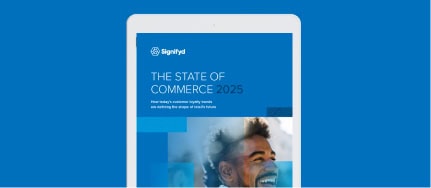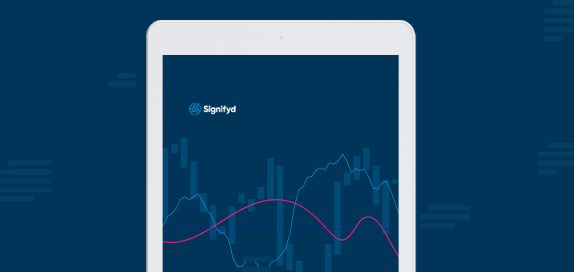Today’s online shopper holds the reins, and for ecommerce retailers, there’s no standing still.
Shoppers are demanding more of ecommerce retailers and expect an online shopping experience that’s more personalized, with options and suggestions, including for payments. And payment methods such as buy now, pay later (BNPL) and social commerce checkout help merchants to sell more and customers to buy more.
In February, Shopify renewed and expanded globally its five-year partnership with Affirm — a third-party lending company that allows customers to buy now and pay later.
Max Levchin, founder and CEO of Affirm, and before that a PayPal co-founder, says millions of consumers in the U.S. rely on installment offers made through Shopify’s Shop Pay feature. “We’ve heard from merchants all over the world who are clamoring for the growth potential it provides,” he said.
Meanwhile, Social commerce will account for $100 billion in sales by 2026, according to EMARKETER. Enabling consumers to buy directly on social media platforms, such as TikTok, Facebook, Pinterest and others “presents a unique chance to establish direct connections with customers and drive significant revenue,” Raj De Datta, CEO of ecommerce personalization platform Bloomreach writes in Forbes.
Social selling requires brands to balance risk and rewardWhile enabling buying on social platforms is increasingly a must-have for retailers, merchants face a double challenge in doing it right. First, checkout needs to be as easy and intuitive as it is on a well-designed ecommerce site. And, merchants need to be attuned to the different consumer behavior they’re likely to encounter with social commerce transactions. Signifyd Head of Strategy and Chief of Staff Nicole Jass explains in the short video below. |
Personalized shopping experiences drive revenue growth
Companies that successfully tailor shopping experiences to individual customers grow faster by driving 40% more of their revenue from personalization than those who don’t, according to McKinzie & Company. And executives are on it: 89% believe that personalization will be critical to their business success in the next three years, says Twilio, a cloud communication provider.
“Providing alternative payment options gives consumers access to capital that would otherwise have been “locked,” thus improving CX and increasing usage,” says Len Covello, CTO of Engage People Inc.
An easy-to-navigate and orderly, appointed website satisfies only the beginning of the shopping journey. Once the cart is full, two in three shoppers say they want a quick checkout that wraps up in under four minutes, with 28% wanting it over in two minutes or less, says software marketplace Capterra.
For merchants, this stage is where the transaction may blow up: 451 Research, now S&P Global Market Intelligence, concluded that U.S. ecommerce merchants are leaving $36 billion in sales behind annually because of poor checkout experiences.
First-time shoppers challenge merchants who lack data-driven insights
With an established customer, the merchant has a very low risk of fraud when offering personal payment options. But a first-time shopper unearths a myriad of trust issues on both sides. Unlike with an established customer, a merchant relying on its own data has no transaction history with a first-time customer.
That lack of insight creates a significant level of risk. lAccording to Juniper Research, ecommerce fraud will increase from $44.3 billion in 2024 to $107 billion in 2029, a growth of 141%.
One traditional way for a merchant to confirm a customer’s identity is to require a customer to open an account, but more than half of online shoppers don’t consider that a viable option anymore. In fact, 26% of online shoppers vanish when asked to create an account, says the Baymard Institute, and, overall, 70.19% abandon the cart altogether. Poof!
Shoppers are concerned about online security, and a Signifyd survey shows that 91% of consumers believe their online accounts and personal information need to be protected by merchants, according to Signifyd’s State of Commerce 2025 report. And 83% of respondents stressed that it’s important – 61% said very important — that an online retailer can identify the shoppers as the rightful owner of the credit card being used to buy.
Online brands need to balance personalization and the creepy factor
Guest checkouts are preferred by 43% of shoppers: 74% believe it’s quicker; 56% don’t want another online account; and 47% say less invasive information is required.
It’s a conundrum: Consumers value their privacy, but also want their go-to brands to know them and act accordingly.
“We’ve been talking about personalization for years, but it’s continuing to evolve, and fast. With advancements in AI, and data analytics, businesses can now create tailored rewards and offers that feel like they were made just for you,” says Jonathan Silver, CEO of Engage People Inc.
“The shift from generic to personalized interactions is helping brands build stronger emotional connections with members. But here’s the challenge for 2025, balancing this level of personalization with the growing demand for data privacy. It’s a delicate balance of trust and value, and the brands that get that right will come out ahead.”
How Signifyd enables high-converting online shopping experiences
Even when the first-time shopper won’t divulge information, a merchant can protect itself and build a safe customer journey by working with a network that supplies data beyond its own to AI-driven models that sort fraudulent from legitimate orders
A consortium model, for instance, means Signifyd has seen 98% of shoppers arriving at a site for the first time elsewhere on its network. That means legitimate orders won’t be declined for fear of fraud. Not surprisingly, consumers — including first-time shoppers don’t want to be treated like criminals when they shop on a site. In fact:
- 48% of consumers surveyed by polling firm Talker for Signifyd said one bad experience with a merchant sends them packing. And for those shoppers who get declined but don’t abandon the retailer, Signifyd data shows 47% don’t make another purchase at the merchant within 30 days of the decline. Moreover, those who do shop again, spend an average of 17% less on their subsequent orders.
- 35% of consumers told Talker if their order were declined for no apparent reason they would give up on the purchase or buy it elsewhere.
Signifyd CEO Raj Ramanand, speaking at the company’s FLOW Summit last spring, put the importance of a good first impression in perspective. Profitable growth, he said, is accomplished when a customer returns after a solid buying experience.
“A delightful customer experience consists of two things,” Ramanand said. “One, I as the retailer, as the brand, have to trust who that person is. And two, once I can do that, I need a way in real time, at the moment when someone is making a return, when someone is checking out, at that moment, I need to be able to personalize that experience.”
A higher repeat purchase rate leads to a higher customer lifetime value, which leads to profitable growth. To accomplish that, Ramanand says, online merchants need to have a deep understanding of their customers to trust them and personalize the shopping experience from start to finish.
Options that provide a personalized VIP payments experience
- One-click payments hit all the points with a customer, and they significantly reduce cart abandonment rates. While over 70% of carts are abandoned during multi-step checkouts, one-click experiences bring this down to under 1%.
- BNPL offers consumers the opportunity to purchase an item and pay it off in installments. Retailers partner with third-party lending companies such as Affirm, Klarna, Apple Pay, PayPal and Afterpay. Consumers are up to three times more likely to buy when a BNPL option is offered and they are more likely to spend more.
- Subscriptions at checkout offer recurring revenue for retailers and customer loyalty with convenience and personalized experiences. Popular with Gen Zers and millennials.
- Social commerce is becoming an increasingly important channel for online brands. EMARKETER projects 22.4% growth in social commerce this year, reaching $100 billion. Brands that don’t offer checkout on social platforms stand to miss a big opportunity.
- Pre-filled checkout streamlines the shopping experience, especially when using express checkout methods. Shop Pay, for instance, is Shopify’s payment option that allows users to save billing and shipping information, credit card and email address for faster checkouts.
- Micro-redemptions and loyalty dollars allow customers to redeem a small amount of points or reward dollars in real time for discounts or purchases.
- Loyalty Points begets loyalty from consumers who can use them more seamlessly as currency for everyday purchases across multiple platforms.
- Set transaction limits to combat fraud, allow the consumer to limit the amount a merchant can charge their account, with an option for the consumer to increase the limit.
- Voice-activated payments are projected to reach $165 billion this year, They are secured with biometric authentication.
- Enable biometric authentication through fingerprint scans, facial and iris recognition and heartbeat analysis, which helps prevent identity theft and fraud.
- Passwordless authentication, relying on biometrics, tokens or one-time passcodes, provides a frictionless and more secure checkout for customers and helps close the sale. More than 30% of online shopping carts are abandoned from lost or forgotten passwords.









